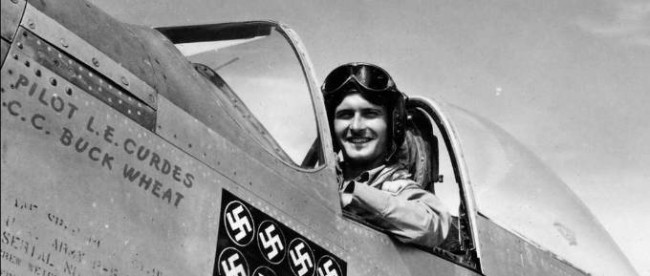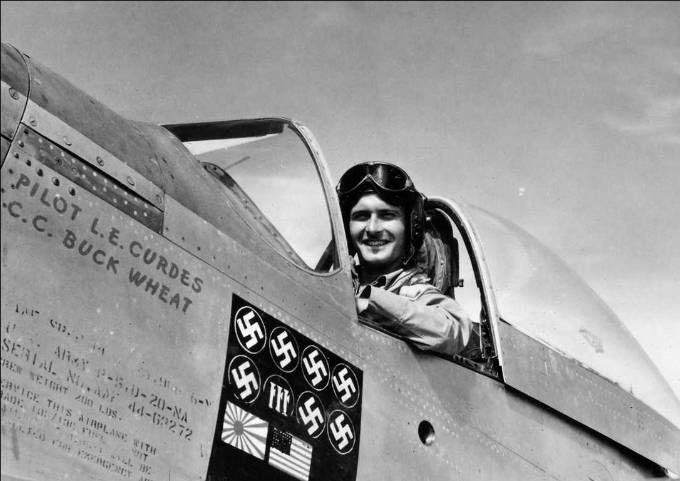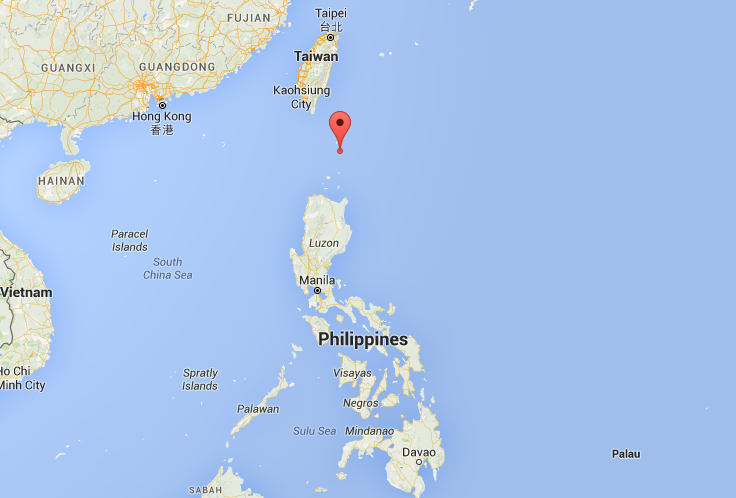The Friendliest of Fire


Pictured above is United States Air Force pilot Captain Lou Curdes, sitting in the cockpit of his P-51 Mustang, a long-range fighter used during World War II. Curdes was a flying ace — an informal title given to a fighter pilot who racked up five or more “kills” (that is, a pilot who downed five or more planes). At the time, it was common for pilots to adorn their planes with “victory tallies” — “small enemy flags or symbols on their planes to denote the number of victories over enemy planes that they are credited with” per WarHistoryFans.com. Curdes was no different. If you look below Curdes, you’ll see ten symbols in a box, noting the origins of the planes which he downed.
Curdes was one of only a handful of aces to successfully take out at least one plane from each of the three Axis powers; the swastikas, of course, were the symbol of Nazi Germany; the three-wing roundels were the mark of the Italian Royal Air Force; and the Rising Sun the insignia of Imperial Japan. But there’s a fourth flag there — an American one.
Now, typically, pilots only get credit for kills if they’re firing on the enemy. Accidentally shooting down one’s own plane isn’t cause for celebration, and intentionally doing so… well, that’s even worse. So what’s going on here?
Let’s start with a map of two Philippine island of Luzon and an archipelago called Batanes.

Luzon you’re probably familiar with — it’s the largest of the Philippine islands, home to the capital city, Manila. Batanes is much smaller — so small, that if it weren’t for the red flag indicator on the map above, you’d probably miss it. But for much of the war, it was under Japanese control — as it was on February 10, 1945.
The Allies had reclaimed Luzon and had set up a base there, and that day, Captain Curdes and three others were sent on a recon mission, looking for Japanese installments on Batan. The quartet found an enemy landing strip and opened fire on it, losing one plane in the process (the downed pilot successfully parachuted into the water). It looked like the recon mission, save for the one lost plane, was going to be a clear success. But then, something went wrong. General George C. Kenney, Curdes’ commander, recounted the story in the January 1977 issue of The American Legion Magazine (available via here as a pdf):
Out of the afternoon haze to the south appeared an airplane. [ . . . ] It was a C-47 two-engined unarmed transport plane. [ . . . ] As he closed in, Curdes made out the American insignia. He was satisfied that it was one of ours. But what was a C-47 doing here over Japanese-held territory, 250 miles from our nearest holding in the Philippines? As he flew alongside, the transport made a right turn and started toward the Japanese air strip. Curdes called on the radio using one VHF channel after another, warning the pilot not to land on the strip as it was in enemy hands, but received no response.
The transport was clearly lost and, worse, headed right into enemy hands. Curdes knew that if the C-47 landed on Batanes, all aboard would be held captive. Curdes himself had been a prisoner of war for a few months in 1943, and from experience, knew that was a fate best avoided. He tried to get the C-47 to divert, but the pilot was unwavering. So Curdes did the only thing he could do — he opened fire on the unarmed transport, systematically taking out the right engine and then left one. Per General Kenney, the now-disabled plane splashed down into the water and sank.
But the people on board? They were alive and safe. All twelve made it into inflatable dinghies, and by the next morning, amphibian rescue planes were on site to bring all twelve to Allied-controlled land.
It turned out that the C-47 had been low on fuel and, thinking it was in a friendly area, tried to land at the first landing strip they came across. Not knowing the truth, the crew of the C-47 was at first furious with Curdes, who had in their minds almost killed them. But after learning of his motivations — and finding out that their transport was way, way off course — they heralded the fighter ace’s actions. General Kenney agreed; he awarded Curdes the Distinguished Flying Cross — the only one issued for shooting down one of America’s own, unarmed planes.
Bonus fact: The “Distinguished Flying Cross ” is given out to members of the military for “heroism or extraordinary achievement while participating in an aerial flight, subsequent to November 11, 1918” per Wikipedia. As astronauts are often pulled from the military, many of those who have gone to space have earned it. For example, Buzz Aldrin and Michael Collins, two of the three members of the Apollo 11 mission (the first successful moon landing) are recipients. But Neil Armstrong is not. It’s not because the first trip to the moon wasn’t “heroic,” though; Aldrin received his for his service during the Korean War, and Collins received his for his service in Vietnam.
From the Archives: Invisible Pink: The camouflaged airplanes that look kind of like cotton candy.
Take the Quiz: When did it happen: World War I or World War II?
Related: A kit if you want to build a 1:48 scale model of the P-51 Mustang; it’s one of Amazon’s best-selling model airplane kits.
